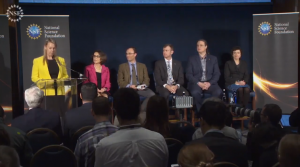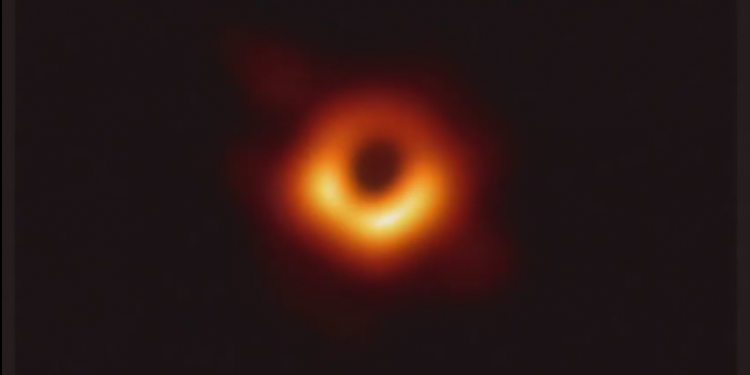It was theorised, it was imagined, and even that insane visionary of Christopher Nolan had decided to reproduce it as faithfully as possible-always according to the thesis of the astrophysicists-in his “Interstellar“. But a black hole had never been able to get a real picture of it.
From 15 hours, Italian hours, on Wednesday 10 April 2019 is no longer so.
It is called the “Event Horizon Telescope” and is the project carried out by various research Institutes including Nasa, and that has seen the Union of the work of 8 radio telescopes arranged in various parts of the world, from the States to Spain and Antarctica. The result of the work of two years, the one that scientists showed in the conference at the NSF, the National Science Foundation, is the image of the great supermassive black hole placed at the center-or quasi-of the galaxy called M87, To “only” 55 million light-years from us. And thank goodness!

A picture? Not quite. In fact the image is, in practice, the shadow that this massive and still largely misunderstood celestial body projects. A huge black round, surrounded by what scholars have found to be a whirling ring of gaseous and rocky glowing material, which precisely causes this bright red color. This black hole is 6.5 billion times more massive than our sun, just to make it clear the power of its gravity which, as already detected in mid-‘ 900 by Albert Einstein with his theories on relativity, manages to capture and retain within itself even the light , capable of moving at a good 300 thousand kilometres per second.
“If immersed in a bright region, like a glowing gas disk, we expect a black hole to create a dark region resembling a shadow- said the president of Eht Science Council Heino Falcke of Radboud University exactly as predicted by Einstein’s general relativity -This shadow, caused by the gravitational bending and the capture of light from the event horizon, reveals much about the nature of these fascinating objects and has allowed us to measure the enormous mass of the black hole of M87 “.
With the union of the thousands of terabytes received from every single radio telescope, we were able to create such a vision as the whole earth was a single giant telescope. This has allowed a crude but effective perception of what is happening in the M87 galaxy. Not of Sagittarius A, another black hole distinctly closer to us, about 27 million light-years, but much smaller. That’s why the choice fell on a more massive black hole, albeit farther.
Needless to say, although not of immediate use, the information gathered open thousands of further scenarios, waiting for the next and future technologies succeed in transforming into superior knowledge all that this little photo-Nonfoto has managed to give, Causing further palpitations and wonders in the hearts of those space lovers, so still immense and mysterious.

































